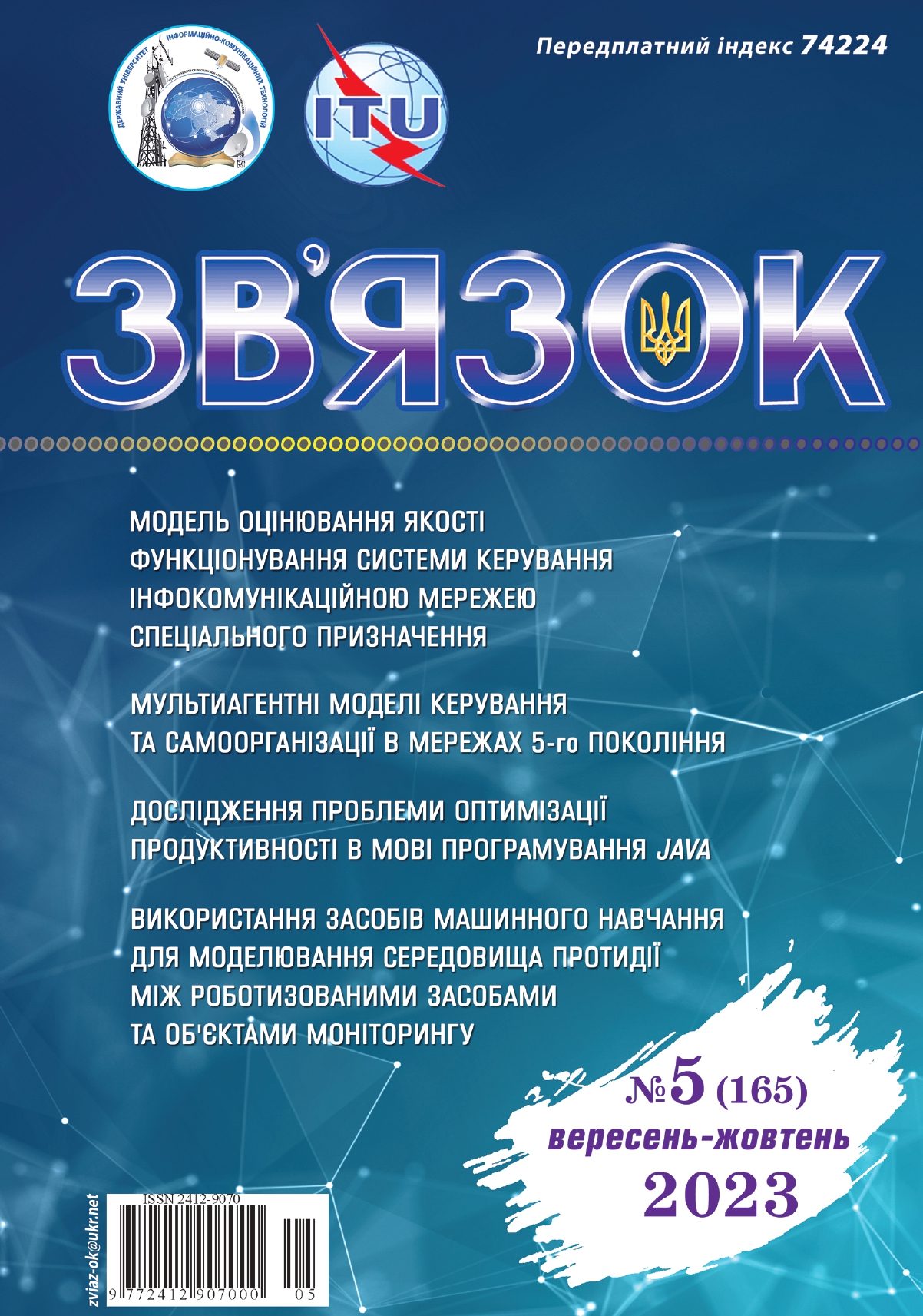Використання засобів машинного навчання для моделювання середовища протидії між роботизованими засобами та об'єктами моніторингу
DOI: 10.31673/2412-9070.2023.052934
Анотація
Репрезентовано розроблену методику моделювання середовища для задачі пошуку та переслідування рухомих об'єктів роботизованими засобами систем моніторингу місцевості в контексті навчання з підкріпленням. Методика інтегрує в себе низку етапів: від визначення цілей та задач до використання згорткових нейронних мереж для аналізу середовища та визначення його впливу на параметри роботизованих засобів. Особливу увагу приділено адаптації моделі до динамічних змін у середовищі та точності відтворення реальних умов. Результати дослідження показують, що запропонована методика може значно підвищити ефективність навчання роботизованих засобів, забезпечуючи їх здатність до адаптації та оптимальної поведінки в різноманітних сценаріях реального світу, з використанням технологій штучного інтелекту.
Ключові слова: штучний інтелект; математичне моделювання; навчання з підкріпленням; штучні нейронні мережі; роботизовані засоби; сенсорні мережі; системи моніторингу; модель середовища; автоматизація.
Список використаної літератури
1. A Systematic Study on Reinforcement Learning Based Applications / K. Sivamayil [et al.] // Energies. 2023. Vol. 16, no. 3. P. 1512. URL: https://doi.org/10.3390/en16031512 .
2. Advances in Machine Learning for Sensing and Condition Monitoring / S.-I. Ao [et al.] // Applied Sciences. 2022. Vol. 12, no. 23. P. 12392. URL: https://doi.org/10.3390/app122312392 .
3. AI Soldier using Reinforcement Learning / S. Bhojwani [et al.] // International Journal of Innovative Science and Research Technology. 2019. Vol. 4, no. 4. P. 1122–1125. URL: https://ijisrt.com/wp-content/uploads/2019/06/IJISRT19AP623.pdf .
4. Almeida P., Carvalho V., Simões A. Reinforcement Learning Applied to AI Bots in First-Person Shooters: A Systematic Review // Algorithms. 2023. Vol. 16, no. 7. P. 323. URL: https://doi.org/10.3390/a1607032 .
5. Souchleris K., Sidiropoulos G. K., Papakostas G. A. Reinforcement Learning in Game Industry–Review, Prospects and Challenges // Applied Sciences. 2023. Vol. 13, no. 4. P. 2443. URL: https://doi.org/10.3390/app13042443.

